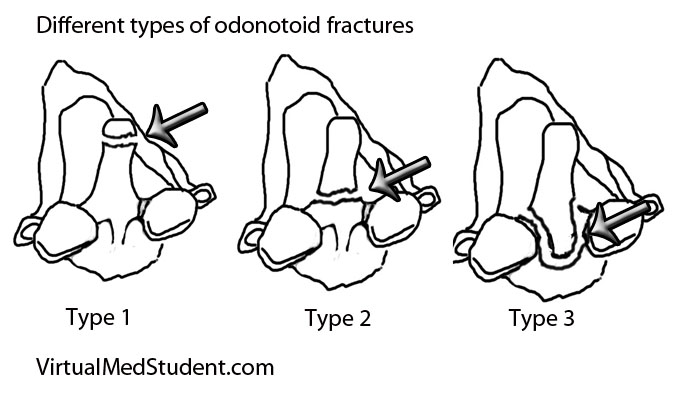


The Anderson and D'Alonzo classification is the most commonly used classification of fractures of the odontoid process of C2.Īnother classification system is the Roy-Camille classification, which aids more in the management of odontoid fractures. Odontoid fractures are generally rare and account for approximately 15 of all cervical fractures 1,2,3.In young patients, these fractures are usually secondary to high energy trauma, with motor vehicle accidents being responsible for the majority of odontoid injuries 1,2,4. Odontoid process fractures are the most common unstable fractures seen in the upper (C12) cervical spine, accounting for 1011 1, 2 of all unstable cervical spine fractures.The widely accepted classification introduced by Anderson and DAlonzo divides these fractures into three subtypes.


 0 kommentar(er)
0 kommentar(er)
